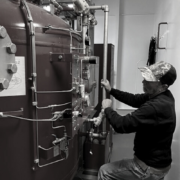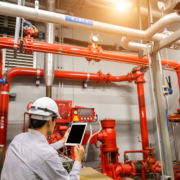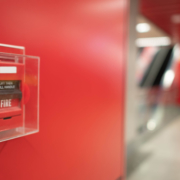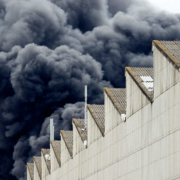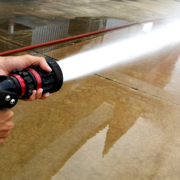SHARED SUPPORT STRUCTURES
An article written by Randy Nelson, CEO of VFS Fire & Security Services, for the June 2012 issue of Sprinkler Age.
Although ‘shared support structures’ are nothing new to our industry, the term and additional guidance concerning hanging and seismic bracing when utilizing shared support structures required some long-deserved attention. Shared support structures can be loosely defined as structures that support more than one object (pipe or equipment) including components from other mechanical disciplines. Examples of shared support structures are trapeze hangers, pipe stands, pipe rack structures, and other similar assemblies. It is not intended that permanent structural elements of a building or the building itself be included as a shared support structure.

The NFPA 13; Hanging and Bracing Technical Committee (TC) meet in late September for the 2012 cycle of the Report on Comments (ROC). Those meetings had significant and productive discussions around this issue and new guidance was voted and approved to be included in the upcoming 2013 edition of NFPA 13.
The concern is that in a seismic event, if all of the piping (including piping other than sprinkler pipe) is attached to the shared support structure, the seismic load acting on the sprinkler brace will be the combined seismic load of all of the piping attached to the support structure. Therefore, if you sized the seismic brace for just the sprinkler line, the brace would be seriously undersized. The intent in the changes was to be conservative in nature and treat all piping attached to shared support structures as if they were sprinkler pipe.
In the upcoming standard, it will be permitted to support sprinkler piping and non-sprinkler related piping and equipment on a shared support structure, provided that it is done so in accordance with NFPA 13; 9.1.1.2 and the design forces for the shared components are determined based on ASCE 7 using an Importance Factor (Ip)=1.5.
A shared support structure shall be permitted to support both the dead loads and seismic loads, however the shared support structure must be designed to support the dead and seismic loads of all of the piping or equipment it is supporting including non-sprinkler components. Any zone of influence calculations would include the water filled sprinkler piping and all of the other fluid filled piping and equipment supported by the shared structure.
In the event the shared structure is designed to support the dead loads, but not the seismic loads of the components, the sprinkler piping shall be braced in accordance with 9.3.5.6 with a zone of influence that includes the water filled sprinkler pipe and all of the other fluid filed mechanical components supported by the shared structure. The seismic load applied to the brace includes all of the piping, equipment and components attached to the shared support structure and not just the sprinkler piping, because the displacement of the shared support in a seismic event will be the product of the combined seismic load of all the components supported. Also, the sprinkler sway bracing attachment shall be connected to the same building structural component as the support structure.
A special thanks to the efforts of the ‘Shared Support Structure’ Task Group. Members of the Task Group included; John Deutsch, Kraig Kirschner, J. Scott Mitchell, Zeljko Sucevic, Janak Patel, Robert Bachman, and John Gillengerten.



